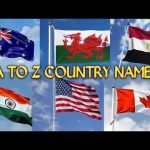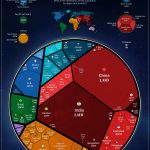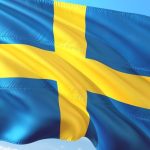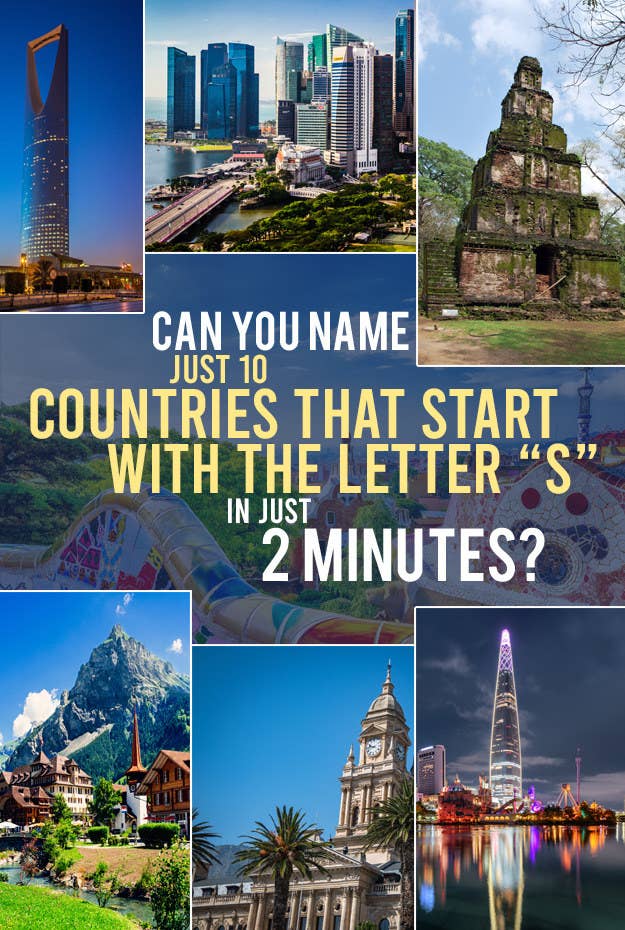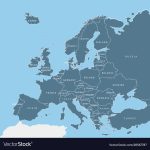D for Country Name: Denmark is a country in Europe that starts with the letter D. It is known for its rich history, beautiful landscapes, and progressive social policies. Denmark is a Nordic country located in Northern Europe, with a population of approximately 5.8 million people.
It is famous for its high standard of living, excellent healthcare and education systems, as well as being a leader in renewable energy. Denmark is also home to the iconic Little Mermaid statue in Copenhagen, its capital city. With its strong economy and commitment to sustainability, Denmark is an attractive destination for tourists and a desirable place to live and work.

Credit: www.moldcreations.com
1. Democratic Republic Of The Congo
The Democratic Republic of the Congo, also known as DRC, is a country located in Central Africa. It is the second-largest country in Africa by land area and fourth-largest in population.
The country is rich in natural resources, with vast rainforests, wildlife, and the world’s second-largest river, the Congo River. The climate varies from equatorial in the north to tropical in the south, with a range of temperatures and rainfall patterns throughout the year.
The DRC has a complex history, marked by colonization, independence struggle, and political instability. The country is culturally diverse, with over 200 ethnic groups and several languages spoken. Traditional music, art, and dance play a significant role in Congolese culture.
The DRC has an abundance of natural resources, including minerals like copper, cobalt, and diamonds. However, economic development has been hindered due to political instability and corruption. Agriculture is a vital sector, employing the majority of the population.
The DRC offers unique attractions for adventurous tourists, such as hiking in Virunga National Park, home to the endangered mountain gorillas. The Congo River and its stunning waterfalls, including the famous Livingstone Falls, also attract visitors. Other attractions include Garamba National Park and the vibrant city of Kinshasa.
2. Denmark
Overview: Denmark is a country located in northern Europe. It is known for its beautiful landscapes, rich history, and strong cultural heritage.
Geography And Climate
Geography: Denmark is a coastal country with a diverse landscape that includes sandy beaches, rolling hills, and flat plains. It is bordered by the North Sea and the Baltic Sea.
Climate: Denmark experiences a temperate oceanic climate, characterized by mild winters and cool summers. The country receives moderate rainfall throughout the year.
History And Culture
History: Denmark has a rich history dating back to the Viking Age. It has been ruled by various kingdoms and has played a significant role in European history.
Culture: Danish culture is known for its emphasis on social equality, sustainability, and a strong welfare system. The country is famous for its design, literature, and music.
Economy
Economy: Denmark has a mixed economy with a strong welfare state. It has a well-developed industrial sector, particularly in areas such as pharmaceuticals, renewable energy, and food processing.
Tourist Attractions
Tourist Attractions: Denmark offers a wide range of tourist attractions, including historic castles, museums, and picturesque towns. Popular destinations include Copenhagen, Aarhus, and the iconic Legoland.
3. Djibouti
Djibouti is a country located in the Horn of Africa and has a population of approximately 980,000 people. It is bordered by Eritrea to the north, Ethiopia to the west and southwest, and Somalia to the southeast. Djibouti is strategically located at the entrance to the Red Sea and the Gulf of Aden, making it an important shipping and trading hub.
Djibouti is a small country with a diverse geography. It includes the hot and arid Danakil Desert in the north, the volcanic plateaus in the central region, and the coastal plains along the Gulf of Aden. The country experiences a hot and dry climate, with average temperatures ranging from 25 to 40 degrees Celsius.
Djibouti has a rich history and is known for its diverse cultural heritage. It has been inhabited by various ethnic groups, including the Afar, Somali, and Arab communities. The country was colonized by the French and gained independence in 1977. Djibouti’s culture is influenced by its Arab, African, and French roots, which can be seen in its languages, cuisine, and traditional practices.
The economy of Djibouti is primarily driven by its strategic location and port facilities, which serve as major hubs for trade between Africa, Asia, and Europe. The country’s economy is also supported by sectors such as transportation, logistics, and tourism. Djibouti aims to become the “Dubai of Africa” by investing in infrastructure development and attracting foreign investment.
Djibouti offers unique tourist attractions that showcase its natural beauty and cultural heritage. Visitors can explore the stunning Lac Assal, a salt lake that is the lowest point in Africa and one of the saltiest bodies of water in the world. The country is also home to the Goda Mountains, which provide opportunities for hiking and wildlife viewing. Additionally, Djibouti’s capital city, Djibouti City, offers historical sites such as the Presidential Palace and the Hamoudi Mosque.
4. Dominica
Dominica is a picturesque Caribbean country that starts with the letter D. Known for its stunning natural beauty, this island nation offers pristine beaches, lush rainforests, and vibrant culture, making it a popular destination for travelers seeking a serene tropical getaway.
# D for Dominica ## Overview Dominica is a small Caribbean island nation located in the Lesser Antilles region. With a population of approximately 71,000, Dominica offers a unique blend of natural beauty, vibrant culture, and a relaxed lifestyle. ## Geography and Climate Known as the “Nature Isle of the Caribbean,” Dominica boasts a diverse landscape of lush rainforests, volcanic peaks, and pristine beaches. Its tropical climate ensures warm temperatures throughout the year, with the wet season occurring from June to October. ## History and Culture With a rich history influenced by indigenous tribes, European colonialism, and African heritage, Dominica has a vibrant and multicultural society. The island is renowned for its traditional music, such as calypso and reggae, as well as its colorful carnival celebrations and local delicacies. ## Economy While primarily reliant on agriculture, Dominica has been working toward diversifying its economy. The tourism industry plays a significant role, attracting visitors with its breathtaking natural sites, including the Boiling Lake and Trafalgar Falls. The island also offers opportunities for offshore banking and renewable energy investments. ## Tourist Attractions Dominica offers numerous attractions for nature enthusiasts, including the Morne Trois Pitons National Park, Roseau Valley, and Champagne Reef, known for its unique underwater geothermal activity. Adventure seekers can enjoy hiking, diving, and exploring the island’s many waterfalls. In conclusion, Dominica stands out as an enchanting destination that showcases the beauty and wonders of the Caribbean. Its untouched landscapes, diverse culture, and warm hospitality make it a hidden gem waiting to be discovered by travelers from all around the world.5. Dominican Republic
The Dominican Republic, a country in the Caribbean, is one of the five countries starting with the letter D. With its beautiful beaches, rich culture, and vibrant history, it is a popular destination for tourists.
|
Overview
The Dominican Republic is a country located in the Caribbean region. It shares the island of Hispaniola with Haiti. The country has a diverse geography and climate, with beautiful beaches, mountains, and tropical rainforests. The history and culture of the Dominican Republic are rich and influenced by Taino indigenous people, Spanish colonizers, and African slaves. The economy of the country mainly relies on tourism, agriculture, and manufacturing industries. The Dominican Republic is known for its vibrant tourist attractions, such as Punta Cana, Santo Domingo, and Puerto Plata. These locations offer a mix of natural beauty, historical sites, and the famous Dominican hospitality. In conclusion, the Dominican Republic is a fascinating destination that showcases breathtaking landscapes, a vibrant culture, and a booming tourism industry. |
|
Geography and Climate
The Dominican Republic is located in the Caribbean region and occupies the eastern part of the island of Hispaniola. It has a diverse geography, including beautiful beaches, mountains, and rainforests. The climate is tropical, with warm temperatures throughout the year. The country experiences a rainy season from May to November and a dry season from December to April. |
|
History and Culture
The history of the Dominican Republic is influenced by various cultures and civilizations. The indigenous Taino people inhabited the island of Hispaniola before the arrival of Christopher Columbus in 1492. The Spanish colonized the island and brought African slaves to work on plantations. This mixture of Taino, Spanish, and African cultures has shaped the cultural identity of the Dominican Republic, expressed through its music, dance, cuisine, and traditions. |
|
Economy
The economy of the Dominican Republic is diverse, with sectors such as tourism, agriculture, and manufacturing playing significant roles. Tourism is a major contributor to the country’s economy, attracting millions of visitors each year. The Dominican Republic is famous for its beautiful beaches, resorts, and historical sites. Agriculture also plays a crucial role, with the country being a major producer of coffee, cocoa, and tobacco. Manufacturing industries, including textiles and pharmaceuticals, are also important for the Dominican economy. |
|
Tourist Attractions
The Dominican Republic offers a wide range of tourist attractions. Punta Cana is a popular destination known for its stunning beaches and luxurious resorts. The capital city, Santo Domingo, is a UNESCO World Heritage site and features historical sites such as the Colonial Zone and the Alcazar de Colon. Puerto Plata is another attractive location, offering beaches, water sports, and the historic cable car ride to the top of Mount Isabel de Torres. Other notable sights include Samaná Bay, Saona Island, and Los Haitises National Park. |
6. Duchy Of Parma
| Overview |
|
The Duchy of Parma is a region with historical relevance, though it is not a separate country. Located in Italy, it offers a unique blend of history, culture, and natural beauty. The region boasts a diverse geography, with picturesque landscapes ranging from lush plains to rolling hills. Parma also enjoys a mild Mediterranean climate, making it an ideal destination for outdoor enthusiasts. The region has a rich history and culture, with notable landmarks and attractions dating back to the Middle Ages. From magnificent castles to stunning churches, Parma is a feast for the eyes. In terms of the economy, Parma is known for its agricultural products, particularly its famous Parmigiano-Reggiano cheese. The region also has a thriving tourism industry, attracting visitors with its charming villages, delicious cuisine, and world-class museums. Overall, the Duchy of Parma offers a delightful travel experience that combines history, culture, and natural beauty. |
| Geography and Climate |
|
The Duchy of Parma is characterized by diverse geography, ranging from lush plains to rolling hills. It enjoys a mild Mediterranean climate, with mild winters and warm summers. The region’s geography and climate provide a favorable environment for agriculture, particularly for the production of Parmigiano-Reggiano cheese and other local specialties. |
| History and Culture |
|
The Duchy of Parma has a rich history that dates back to the Middle Ages. It was ruled by various dynasties, including the Farnese and the Bourbon-Parma families. This historical significance is reflected in the region’s architecture and landmarks, which include magnificent castles, stunning churches, and well-preserved medieval villages. Parma is also known for its cultural heritage, with a tradition of music, art, and gastronomy that continues to thrive today. |
| Economy |
|
The economy of the Duchy of Parma is primarily based on agriculture and tourism. The region is renowned for its agricultural products, with Parmigiano-Reggiano cheese being one of its most famous exports. Additionally, Parma is known for its production of high-quality cured meats, wines, and olive oil. The tourism industry is also a significant contributor to the region’s economy, attracting visitors with its cultural heritage, picturesque landscapes, and culinary traditions. |
| Tourist Attractions |
|
The Duchy of Parma offers numerous tourist attractions for visitors to explore. Some of the highlights include the impressive Parma Cathedral, a masterpiece of Romanesque and Renaissance architecture. Palazzo della Pilotta is another must-visit, housing museums and art galleries that showcase Parma’s historical and cultural treasures. Food enthusiasts will delight in the Parmigiano-Reggiano cheese factories and the famous Parma ham producers. The picturesque town of Castell’Arquato and the charming village of Torrechiara Castle are also worth a visit. Whether you’re interested in history, art, food, or natural beauty, Parma has something for everyone. |
Frequently Asked Questions On D For Country Name
What Country Name Starts With D?
There are five countries that start with the letter D: Democratic Republic of the Congo, Denmark, Djibouti, Dominica, and the Dominican Republic.
How Many Countries Are In D?
There are five countries that begin with the letter D: Democratic Republic of the Congo, Denmark, Djibouti, Dominica, and Dominican Republic.
Which Country In Europe Starts With D?
Denmark is the European country that starts with D.
What Is The Name Of The African Country With D?
The name of the African country with D is the Democratic Republic of the Congo.
Conclusion
There are five countries that start with the letter D: Democratic Republic of the Congo, Denmark, Djibouti, Dominica, and Dominican Republic. Each of these countries has its own unique history, culture, and significance. From the African continent to the Caribbean region, these countries offer a diverse range of experiences for travelers and demonstrate the rich diversity of our world.
Whether it’s exploring the lush landscapes of the Democratic Republic of the Congo or enjoying the vibrant city life in Denmark, these countries are worth discovering.


